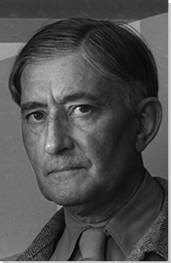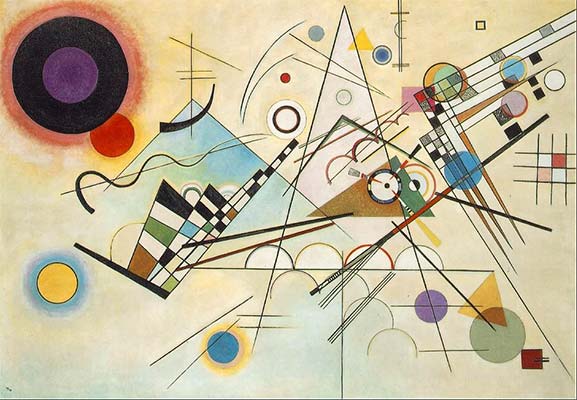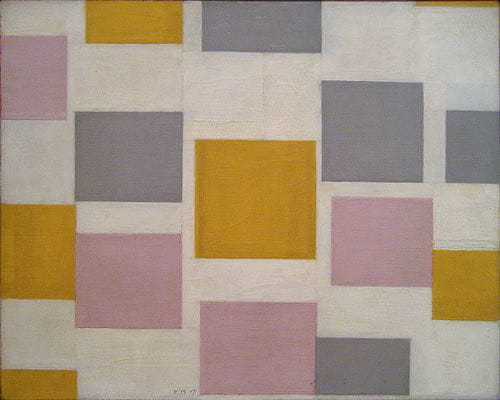Summary of Josef Albers
Josef Albers was instrumental in bringing the tenets of European modernism, particularly those associated with the Bauhaus, to America. His legacy as a teacher of artists, as well as his extensive theoretical work proposing that color, rather than form, is the primary medium of pictorial language, profoundly influenced the development of modern art in the United States during the 1950s and 1960s.
Accomplishments
- Albers's 1963 book Interaction of Color provided the most comprehensive analysis of the function and perception of color to date and profoundly influenced art education and artistic practice, especially Color Field Painting and Minimalism, in the 20th century.
- His series Homage to the Square, produced from 1949 until his death, used a single geometric shape to systematically explore the vast range of visual effects that could be achieved through color and spatial relationships alone.
- Albers's art and theories were widely disseminated to generations of artists and art-school faculty through his teachings at the Bauhaus, Black Mountain College, and Yale University, and they provided the theoretical basis for the development of non-objective art during and after the age of Abstract Expressionism.
Important Art by Josef Albers
Shrine
In 1942 Josef Albers embarked on a series of zinc plate lithographs entitled Graphic Tectonics, a title that references both the solidity of geological matter and movement. While he is best known for his color studies, much of Albers non-sculptural work prior to the 1950s was monochromatic and focused on unmodulated linear and geometric relations, spatial ambiguity, and the perception of dimension, creating "maximum effect from minimum means." This series of works was completed while he taught at Black Mountain College as part of his continued exploration of optical illusions and arrangements of lines that generated conflict between perception (what one sees) and cognition (what one knows).
Zinc Lithograph - The Museum of Modern Art, New York
Dissolving/Vanishing
Homage to the Square is the signature series of over 1000 related works, which Albers began in 1949 and continued to develop until his death in 1976. Such sustained attention to a single aspect of painting reflects his conviction that insight is only attained through "continued trying and critical repetition." This early work exemplifies his basic approach to exploring the mutability of human perception and the range of optical and psychological effects that colors alone can produce depending on their position and proximity. Albers chose a single, repeated geometric shape, which he insisted was devoid of symbolism, to systematically experiment with the "relativity" of color, how it changes through juxtaposition, placement, and interaction with other colors, generating the illusion of attraction, resistance, weight, and movement. As in his earlier monochromatic and linear studies, this series explores the potential of static two-dimensional media to invoke dynamic three-dimensional space.
Oil on Masonite - Los Angeles County Museum of Art
Two Portals
After retiring from Yale in 1958 at the age of 70, Albers's former teacher and colleague, Walter Gropius, invited Albers to design a mural for the interior of the new Graduate Center at Harvard University, leading to other important mural commissions. Two Portals at the Time and Life Building, pictured here, features alternating polished nickel and bronze squares, surrounded by alternating bands of tan and white glass, to suggest receding planes, providing the illusion of depth on a flat surface.
Bronze and glass - Time-Life Building, New York City
Manhattan
Albers created this mural for the lobby of the Pan Am (now MetLife) Building in 1963, again at the request of the building's architect, his friend and mentor, Walter Gropius. Tens of thousands of people passed by this mural during their daily commute to Grand Central Station until it was removed when the lobby was renovated in 2000. Albers created the mural as a tribute to New York City, based on an early work City, a 1928 Bauhaus glass "wall painting" of interlocking rectangles that use color and placement to suggest both three-dimensionality and movement. At the current time, this mural is in storage and cannot be seen by the public.
Formica - Lobby of the Pan Am Building (now called the MetLife Building), New York City (Removed 2000)
Repeat and Reverse
Albers executed this exterior sculpture at the request of his colleague Paul Rudolph, the architect of the then-new Art and Architecture Building at Yale University. Like Albers's Homage to the Square series, which deal with the optical effects produced by color and line, Repeat and Reverse uses a simple arrangement of steel bars to reproduce a three-dimensional illusion of planes that appear to project and recede from the wall.
Stainless steel on concrete - Art and Architecture Building, Yale University, New Haven, Connecticut
Soft Spoken
This work in the Homage to the Square series was executed almost 20 years into what may be the most sustained exploration of the relational character of color in 20th-century art. An application of a quasi-scientific method to art-making, the Homage works demonstrate the capacity of a strictly limited formal strategy to produce inexhaustible permutations and continually generate new visual and aesthetic experiences. In Soft Spoken, Albers has added a fourth square, and narrowed the range of color, while retaining the calculated asymmetry of the other works in the series. This late work continues and extends Albers's lifelong, and remarkably consistent, pedagogical focus on "opening eyes" through the repetition of forms and subtle color juxtapositions that generate internal friction, movement, and instability. Regarding them more as experiments than expressive statements, Albers continued adding to the series until the end of his life, "not because of the squares, but because there is no end with color." He donated this painting to the Metropolitan Museum of Art in 1972, a year after they honored Albers with the museum's first ever solo exhibition of a living artist.
Oil on masonite - The Metropolitan Museum of Art, New York
Biography of Josef Albers
Childhood and Education
Josef Albers was born March 19, 1888, in Bottrop, Germany. From 1905 to 1908 he studied to become a teacher in Buren, teaching in Westphalian primary schools from 1908 to 1913. After attending the Konigliche Kunstschule in Berlin from 1913 to 1915, he was certified to teach art. Albers studied lithography in Essen and attended the Academy in Munich. In 1920 at the age of 32, Albers entered the Bauhaus, a school in Weimar that was committed to exploring the relationship between the arts and technological society and emphasized the integration of architecture, fine art, and craft.
Albers initially jointed the Bauhaus as a maker of stained glass and in 1922, as a Bauhausgeselle (journeyman), he was charged with running the Bauhaus glass workshop. In 1923 he began to teach the Vorkurs, a basic design course. When the Bauhaus moved to Dessau in 1925, he became Bauhausmeister (professor), teaching alongside fellow artists Paul Klee and Wassily Kandinsky. In addition to working in glass and metal, he designed furniture and typography.
Mature Period
After the Nazis forced the Bauhaus to close in 1933, the architect Philip Johnson, then a young curator at the Museum of Modern Art, secured positions for Albers and his wife Anni Albers at the experimental art school, Black Mountain College, where he headed the painting program from 1933 to 1949.
Black Mountain College was a liberal arts college with an innovative and progressive curriculum that repositioned the study and practice of art from the margin to the center of the undergraduate program, and Albers's preliminary art course in materials and form was one of only two courses required of all students, regardless of major. Although Black Mountain's focus was not the training of professional artists, the emphasis placed on the centrality of art to everyday life, and its integrative and collaborative approach to art-making, attracted creative students and faculty in every media, from painting and literature to dance and architecture. Albers brought the theories and teaching methods of the Bauhaus to Black Mountain, but he was influenced in turn by the progressive educational philosophy of American philosopher John Dewey, with its emphasis on experimentation and direct experience as central to the learning experience. Dewey spent several extended residencies at Black Mountain College in 1935-36 and was a frequent guest in Albers's classes.
While teaching at Black Mountain College, Albers continued to develop his aesthetic theories through his art practice. He began the Variant/Adobe series (c. 1947), which systematically explored the range of visual effects made possible by subtle variations in color, shape, and positioning. He also mounted more than 20 solo shows in various media in American galleries, including glass work from the Bauhaus period, as well as graphic art, drawings, and oil paintings.
In 1949 Albers left Black Mountain College to serve as the chairman of the Design Department at Yale University from 1950 to 1958 where he taught Richard Anuszkiewicz and Eva Hesse. While lecturing at Yale, Albers began his most famous body of work, the series Homage to the Square, an exercise on the optical effects of color within the confines of a uniform square shape.
After retiring from Yale in 1958 at the age of 70, his former teacher and colleague Walter Gropius invited Albers to design a mural for the interior of the new Graduate Center at Harvard University. This led to other important mural commissions, including Two Portals (1961) at the Time and Life Building and Manhattan (1963) at the Pan Am Building, both in New York.
In addition to painting, printmaking, murals, and architectural commissions, Albers published poetry, articles, and books on art theory. His best-known book, Interaction of Color, was and is still a widely used text in art education and has recently been reissued by Yale University.
Late Years and Death
After leaving Yale University in 1958, Albers continued to teach, giving guest lectures at colleges and universities throughout the country. An exhibition of Homage to the Square, organized by the Museum of Modern Art in New York, traveled from 1965 to 1967 to parts of South America, Mexico, and the United States. In 1971 Albers was the first living artist to be honored with a solo retrospective at the Metropolitan Museum of Art in New York.
Albers lived and worked in New Haven, Connecticut, alongside his wife and fellow artist, Anni Albers, until his death on March 25, 1976.
The Legacy of Josef Albers
Albers's most profound impact on the history and practice of modern art was his transformation of art education and pedagogy, which he believed was the key to developing a future audience for art. Central to this pedagogy was a non-dogmatic, un-hierarchical, "scientific" approach based on observation and experimentation. As a teacher his stated goal was to "open the eyes," of students by disrupting ingrained habits of perception and considering forms apart from their conventional associations, reduced to their basic characteristics (line, shape, material, color). His strategies of "defamiliarization," such as drawing with the non-dominant hand, mirror writing, exploring optical illusions, and representing "negative" spaces, sharpened visual observation, precision, and awareness and are now an accepted part of the academic training of visual artists.
Of course, this approach to modernism was practiced by highly prominent students such as Robert Rauschenberg, Cy Twombly, Donald Judd, Ray Johnson, Richard Anuszkiewicz, Eva Hesse, and John Chamberlain.
Influences and Connections

-
![Pop Art]() Pop Art
Pop Art -
![Color Field Painting]() Color Field Painting
Color Field Painting ![Geometric Abstraction]() Geometric Abstraction
Geometric Abstraction
Useful Resources on Josef Albers
- Josef and Anni Albers: Designs for LivingBy Nicholas Fox Weber, Martin Filler, and Paul Warwick Thompson
- Josef Albers: To Open Eyes: The Bauhaus, Black Mountain College, and YaleOur PickBy Frederick A. Horowitz and Brenda Danilowitz
- Josef Albers: Formulation: ArticulationBy Josef Albers and T.G. Rosenthal
- Interaction of ColorOur PickBy Josef Albers and Nicholas Fox Weber
- Poems and DrawingsBy Josef Albers and Nicholas Fox Weber
- Despite Straight LinesBy Josef Albers
 Ask The Art Story AI
Ask The Art Story AI





























![Paul Klee: Affected Place [<i>Betroffener Ort</i>] (1922)](/images20/works/klee_paul_3.jpg)






